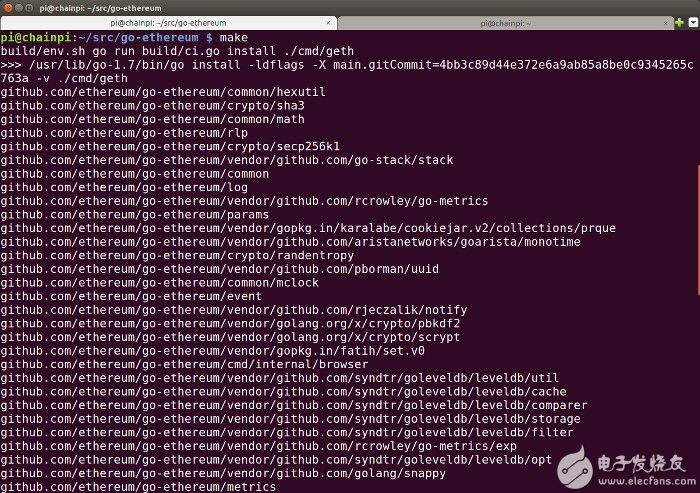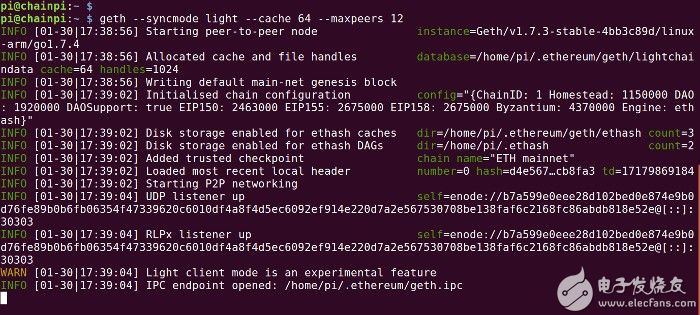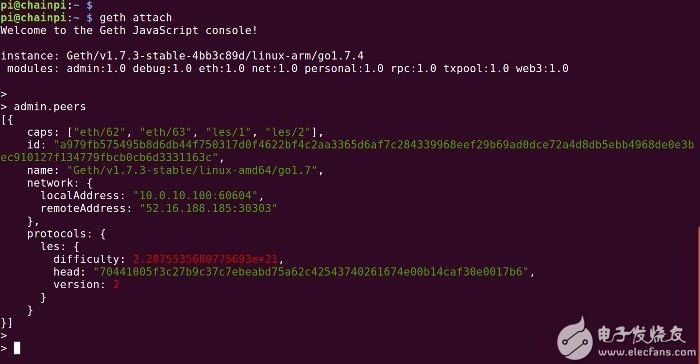Install and run Ethereum blockchain client on Pi 3B. Blockchain is now an incredibly hot topic and has been around for a while, thanks in large part to the fact that cryptocurrencies - mostly Bitcoin - seem to be produced by their early adopters overnight. Wealth, and the new economic possibilities they open up. However, blockchain can be used not only for cryptocurrencies, but as Greig pointed out in its recently published article, its distributed nature and tamper-resistant recording capabilities for verifying transactions can be used for IoT applications. The exciting thing about the Ethereum platform is that it is not just a simple cryptocurrency and secure transaction, but also a distributed computing platform. In this article, we will briefly introduce Ethereum architecture and try to introduce some key concepts and components, and then continue to install client software on Raspberry Pi. It should be noted that we will not mine any cryptocurrency, because you do need a powerful GPU, but you can use Pi to create a simple sandbox for experimentation - this also shows that blockchain technology really works on embedded platforms. . Ethereum smart contract example. Source: ethereum.org A blockchain is a distributed record book, usually managed through a peer-to-peer network, and its size will continue to grow as more records or blocks become available. The block usually contains the timestamp of the transaction data and is encrypted and protected by a hashing algorithm so that once the data is submitted, it cannot be modified. The Ethereum platform has its own cryptocurrency, called Ethereum, but it also builds blockchain technology to create a decentralized platform for smart contracts - including code functions and blockchain functions, and can interact with other contracts to make Decide, store data, and send Ethereum to others. Smart contracts are implemented using the JavaScript-based Solidity language. The Solidity compiler is used to compile smart contracts into bytecode - just like using JavaScript or Python, code execution like Java and Android - and then through the Ethereum Virtual Machine. Executing transactions in smart contracts generates a certain cost, which we will introduce in future articles. Ethereum provides many different client applications. The original reference implementation, geth, is written in Go. Some of them can mine ether. There is also independent mining software, as well as IDEs for GUI clients and distributed applications. In addition to the main public Ethereum blockchain network mainnet, there is also a test network for experimental use. You can also create your own private network. Assuming we have installed Raspbian, we can begin to update the installed packages to the latest version. I run out of memory the first time I compile the Ethereum client. A good way to free up memory for memory-intensive tasks is to reduce the amount allocated to the GPU. In fact, if you do not need a graphical desktop, simply configure the system to boot to the command line. 3 → Boot B1 → Desktop / CLI B1 → Console 7 → Advanced A3 → Memory Split 16 (MB) Reboot Next, if we install the relevant installation package. Later, if we grab the source code of geth, an official language implementation of the Ethereum node, compile this code and copy the executable to /usr/local/bin/. First of all, if we use GETH to create a new account. This will generate a new set of encryption keys and use a password to protect the private key. Please note that if you use this account to mine cryptocurrencies and make meaningful transactions, you need to make sure to back up your keys and prevent your private keys from being accessed. Start the node now. If we were to run GETH without any parameters, it would start a node and try to synchronize the entire public net blockchain. Its size exceeds 50GB and continues to grow, which may not be a good idea for embedded computers. So, we started the node in light synchronization mode. This will only extract block titles on demand as they appear and other parts of the blockchain. To force the node to exit, simply press CTRL-C to run it as a service at startup: (Replace "vi" with your favorite text editor) Then enter: Save the file and run the Ethereum node as a "PI" user: When our Ethereum node runs as a service, we can now connect to it using: For example: This gives us an interactive JavaScript console. From here we can call function functions such as: List the current account. Or get information about the linker: Please note that the lightweight client protocol is still in the development phase, to the extent that it is a trial application, and it depends on the full peer/node to support it. As a result, the Ethereum blockchain may not be fully operational at the time of writing. In other words, things are rapidly developing, and this situation will easily change in the not too distant future. So far, we have just installed the client software, created an account, started the node and observed the peer-to-peer connection. In the next article, we will look at the actual execution of the transaction.
What is Feeder on the placement machine? What is Feida on the placement machine? Feida is the main accessory of the placement machine. Its function is to mount the SMD patch components on the feeder, and the feeder provides components for the placement machine for patching.
In the placement machine, the feeder functions to supply the chip component SMC/SMD to the placement head in a regular pattern and order for accurate and convenient pickup, which occupies a large number and position in the placement machine. It is also an important part of choosing a placement machine and arranging the placement process. Depending on the SMC/SMD package, feeders typically have a variety of tapes, sticks, waffles, and bulk materials.
Panasonic Feeder,Insertion Machine Tape Feeder Unit,Tape Feeder Unit,Feeder Panasonic Shenzhen Keith Electronic Equipment Co., Ltd. , https://www.aismtks.com



